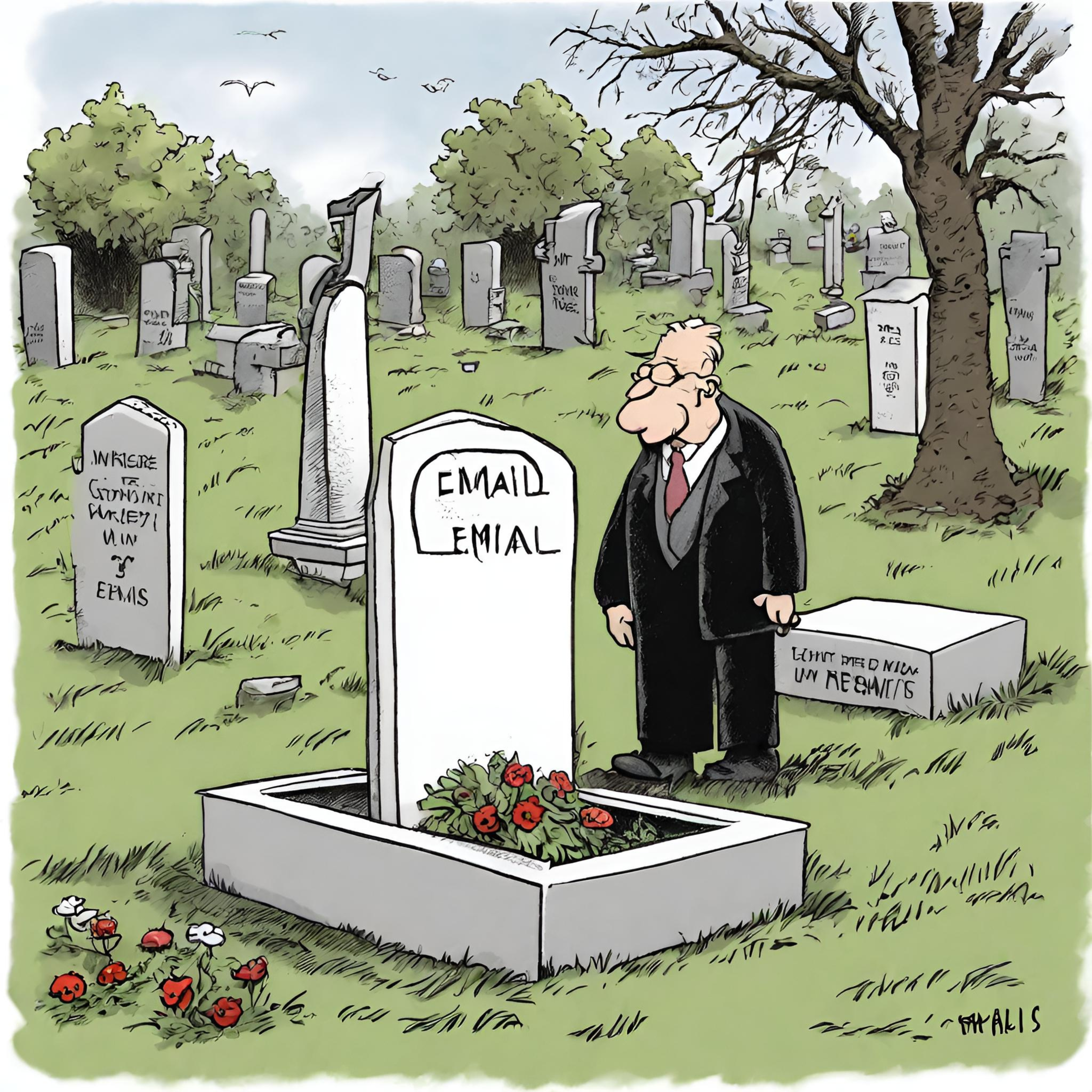
Ok, so maybe not dead… dead, but I can confidently say email is no longer the best way to communicate with your members. So it’s dead to me, and you should consider swinging the digital axe, too.
Let’s face it: reading emails is a chore; we crave that delicious ding of distraction. Another email in the inbox doesn’t even get a sideways glance; it usually spells more work, but that sweet ding brings a welcomed micro-distraction. And there you have it: you have grabbed their attention as they pick up their phone, and you have just beaten the 100000 other messages sitting dormant, never to be read in their inbox.
In the labyrinth of digital comms, email has lost its stronghold as the primary channel for professional discourse, signalling a shift in the landscape of marketing strategies. As we sail into an era spurred by incessant innovation and a ceaseless yearning for immediacy, are we witnessing the sunset of the golden age of email? Boardrooms and digital nomads alike echo a resounding affirmation: The end is nigh for electronic mail as we know it.
Our digital ecosystem is increasingly becoming impatient, craving the kind of promptness in communication that can’t be packaged and parcelled through emails. The head-turning ‘ding’ of push notifications quenches the modern user’s thirst for instant gratification, something an email no longer attracts. This subtle but powerful disruption compels engagement on a real-time basis, fostering a culture where immediacy is king.
As we scrutinize the evolving communications paradigm, the evidence is undeniable—the future belongs to those who embrace contemporary digital customer engagement with open arms. Research shows that companies pioneering the charge into these realms are thriving and dominating, with a staggering 70% increase in top-line revenues. The corporate crystal ball is clear: by 2025, investment in digital engagement strategies will skyrocket by 93.5%, aligning perfectly with consumer expectations that call for over half of their brand interactions to be digital within the next three years. Thus, the trajectory for B2C companies is unmistakably charted: substantial investment in digital engagement is not merely beneficial; it’s imperative for any entity aspiring to lead and expand in a contemporary marketplace. This alignment with consumer desires isn’t a fleeting trend—it’s the roadmap for enduring success.
Emails denote formality, delay, and, more often than not, an endless thread worming its way through convoluted conversation. Enter the realm of instant messaging and chat tools – sleek, real-time conversation hubs that turn tedious correspondence into dynamic dialogues. They are the striking antithesis to the staid email tradition, embodying efficiency and promoting fluid collaboration.
Digital engagement tools have risen from the creative chrysalis to offer hyper-personalised experiences unlike ever before, something the rigid email structure fails to deliver. Engagement doesn’t just mean reading; it’s about interacting—clicking, swiping, speaking. It’s about fostering a two-way street where communication is received and actively participated in. This is how we now drive true member engagement. With digital engagement tools, connections are formed, relationships forged, and conversions made. The result? Members feel valued, understood, and connected to your brand. This is the power of contemporary customer engagement – it’s not just about selling a product or service; it’s about creating meaningful connections and building lasting advocacy.
Not only have outbound comms changed their stripes, but how your members interact with your organisation has also shifted. The deployment of AI-driven conversation bots is making waves, signalling a significant breakthrough in how we connect. These savvy virtual confidants are adept at simulating and even superseding human interaction, providing instantaneous, personalised responses that could render the clunkiness and delay of traditional email obsolete.
Chat tools have been gearing up, armed to their digital teeth with file-sharing capabilities, video conferencing, and project management features. They have become command centres for collaboration, a far cry from the desperately siloed nature of conventional email systems.
The winds of change are blowing, redefining the trajectory of our digital journey. As pioneers at the vanguard of this revolution, we must recognise the intrinsic limitations of email and bravely venture towards platforms that break boundaries, ones that advocate for disruption and stride with innovation.
While checking one’s inbox becomes a relic of the bygone era, the zeitgeist calls for a paradigm shift to connectivity, immediacy, and innovation. We stand at the precipice of this evolution, gazing into a realm where engaging dialogues prevail over unyielding monologues. Death to email, we say; long live the king—digital, direct, immediate communication.
In this brave new world of bytes and bots, our voices resonate not through typed letters in a stale inbox but through vibrant, immediate, and synergistic channels. It’s time to disband the old guard and usher in a new era of digital communication—leaner, keener, and seamlessly interwoven into our daily lives.
The death of email is not the end; it’s a clarion call to rise, innovate, and engage with one another in ways that are not just heard but truly felt. This is our wake-up call, our siren song, our disruptive manifesto. Email, your time is up. The future beckons, it’s time to serve your members via direct messaging.
Speak to us today to see how we can help your organisation leverage the latest digital engagement tools and no longer spend time studying the bounce lists from your email campaigns.
